Research News
March 18, 2015
T.W. Daniel Experimental Forest in the News
KSL-TV, Deseret News and the Standard Examiner recently featured iUTAH researcher Scott Jones and his work in the Logan River watershed. The stories described how data gathered at iUTAH's GAMUT climate station on the T.W. Daniel Experimental Forest can help water managers understand the drought implications of Utah's warm winter. Watch the KSL News report and read the Deseret News and Standard Examiner articles.
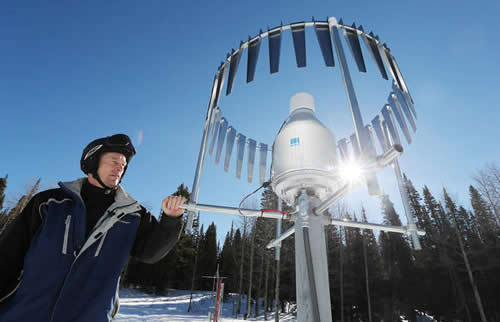
March 17, 2015
iUTAH Conceptual Framework Paper Published
iUTAH researchers have just published a paper entitled iSAW: Integrating Structure, Actors, and Water to Study Socio-Hydro-Ecological Systems. iSAW is an integrated framework for human-water system sustainability, using system components that include structure, actors, and water. This framework can be applied to multiple natural resource issues. Authors of the paper are Rebecca L. Hale, Andrea Armstrong, Michelle A. Baker, Sean Bedingfield, David Betts, Caleb Buahin, Martin Buchert, Todd Crowl, R. Ryan Dupont, James R. Ehleringer, Joanna Endter-Wada, Courtney Flint, Jacqualine Grant, Sarah Hinners, Jeffery S. Horsburgh, Douglas Jackson-Smith, Amber S. Jones, Carlos Licon, Sarah E. Null, Augustina Odame, Diane E. Pataki, David Rosenberg, Madlyn Runburg, Philip Stoker, and Courtenay Strong.

February 1, 2015
Where is the Nitrogen in Utah's Streams Coming From?
Air pollution that is in rain, snow, and dry particles can affect the biology and quality of stream ecosystems. iUTAH Postdoctoral researcher, Dr. Steven Hall’s work confirms that both urban and mountain snow in Northern Utah contains the same components that are in PM2.5, the fine particulate matter that is of the greatest health concern about air pollution. This demonstrates that local air pollution has a widespread environmental impact. Despite differences in air pollution in the Salt Lake, Cache, and Heber valleys, similar amounts of nitrogen were deposited in those areas during the winter of 2013-14.
Dr. Hall has found there is ample nitrogen in Utah’s urban streams, but air pollution isn’t the main culprit. Hall’s data shows that only a small amount of the nitrogen in precipitation actually ends up in streams. Most of the nitrogen is taken up or removed by plants and microorganisms. Rather, other urban sources appear to be the dominant contributors of nitrogen in streams. In Salt Lake City's Red Butte Creek, stream nitrogen peaked following inputs of urban groundwater. Measurements of nitrogen isotopes in streamside plants showed differences in nitrogen composition between plants in the mountains and those in urban areas. This suggests a shift in nitrogen sources and cycling as streams enter urban areas. The amount of nitrogen being measured is not directly hazardous, but can contribute to numerous changes in our aquatic ecosystems. These include shifts in biological communities (the identity and abundance of species) and the increased growth of algae.
What does this mean for those living in these urban areas? To decrease the nitrogen in our streams, use less fertilizer on your lawn or convert your yard to drought-tolerant vegetation. In many cases fertilizer is over-applied, and frequent applications are unnecessary given high background nitrogen inputs from atmospheric deposition, especially if clippings are retained on the lawn.
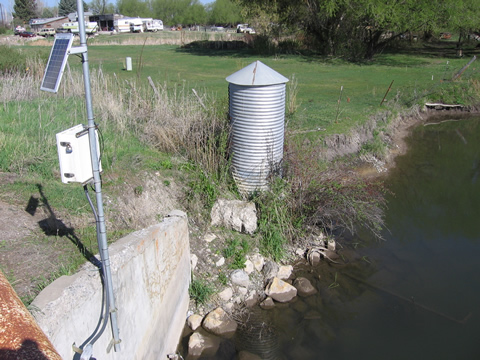
SITE3-GAMUT site at Mendon Road, Mendon UT
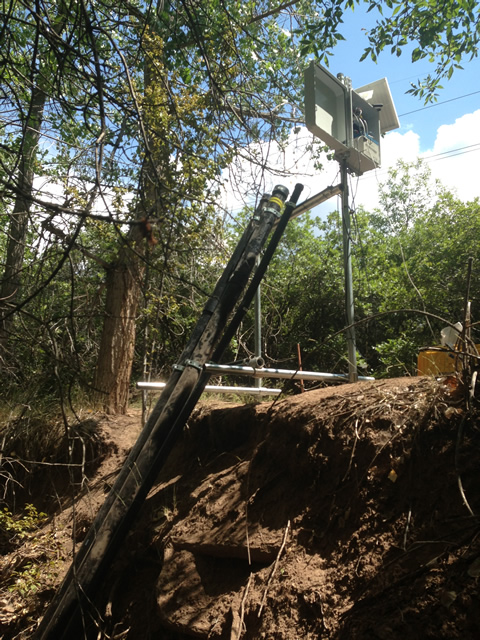
SITE5-GAMUT site at Foothill Drive, Salt Lake City UT
January 8, 2015
Breakthroughs in Aquatic Microbiology Advance iUTAH's Research
Streams are teeming with many different kinds of bacteria, but until recently the technology has not existed to let scientists understand how the species composition of microbial communities is linked to water quality. Researcher Zachary Aanderud and his PhD student, Erin Jones, are studying the importance of bacteria in stream environments and their role in water quality for iUTAH. Breakthroughs in DNA sequencing technique allow iUTAH to be part of a new wave of aquatic ecology studies now taking place. Previously scientists could describe stream bacterial activity only in terms of total carbon – basically measuring the amount of bacteria, but not which kinds are present. Identifying the species present is useful because different types of bacteria are able to create different biochemical compounds, including ones that are considered pollutants. We now are able to analyze a stream's capacity to produce any number of pollutants, based on molecular activity represented in bacterial genomes.
Their first study involved collecting water samples from high elevation-pristine sites to low elevation-urbanized sites in the Logan, Red Butte, and Provo watersheds. In the past, their lab had measured levels of a single bacterium, E. coli, at these sites, and recorded a definite increase in this species from high elevation to low elevation. The more urbanized sites showed a decrease in bacterial diversity – there were fewer species, and certain species tend to grow more dominant as they looked further downstream. Upon closer examination, the shift in bacterial community happened ABOVE heavy urbanization in all three watersheds. Instead, the shift corresponded to sites immediately downstream of dams (First Dam in Logan, Red Butte Reservoir in Red Butte, and Jordanelle Reservoir in Provo). This change occurred before there were significant changes in E. coli levels.
This data, paired with water chemistry data collected by iUTAH researchers, will give huge insights to how bacteria communities interact with other water quality variables. By collecting samples during different seasons of the year we can see if these trends are consistent across different weather and flow patterns.
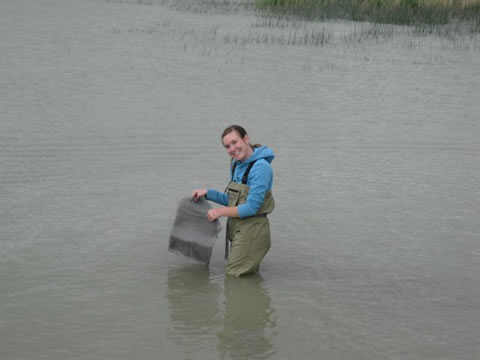
Erin Jones sampling Utah Lake
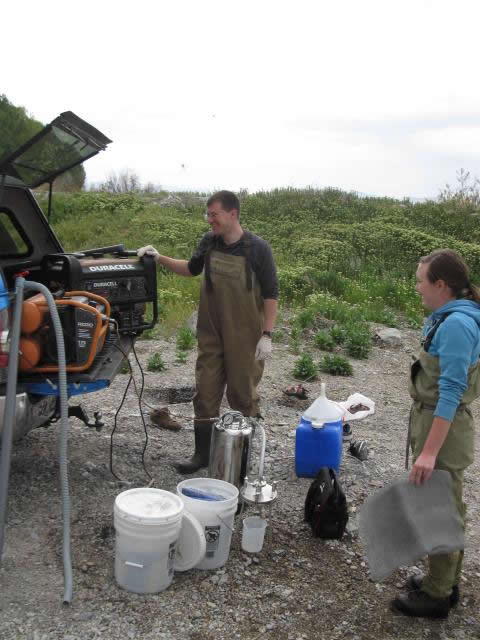
Filtering samples with fellow graduate student Tylan Magnusson
July 31, 2014
It's not all sensors: Social science bolsters mountain water research
The iUTAH household water survey was mentions in an Environmental Monitor article on July 29, 2014. The article explains that as scientists and governments in the western U.S. continue to plan for how to meet the water needs of a growing population in a potentially drier climate, they’ll benefit from methods that move beyond scientific knowledge and let the voice of the people in the region come to the surface.
Read More...


